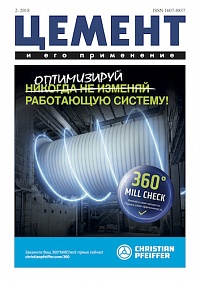Advantages of solid recovered fuels (SRF) in cement clinker burning systems and factors influencing the effectiveness of using SRF are described. The equipment for processing solid household waste into SRF by BMH Technology Oy, Finland, is presented. Solid Envir...
As a world-wide leader in grinding solutions for the cement industry and understanding the changing needs of cement producers and how to tailor solutions to meet those needs. Optimizing output, improving efficiency, and reducing CO2 emissions while keeping investment c...
To prevent fires and explosions in the workplace when working with combustible dust (for example, coal dust), emergency inerting systems are used. Their work is automatically initiated if the concentra- tions of methane, carbon monoxide or oxygen, or the permiss...
Old and crushed concrete structures, which have become construction wastes, have a significant impact on the environment. Fine fractions formed in crushing them (mainly as sand) are difficult to reuse for concrete. Laboratory studies have shown that it is possib...
Construction sector is large, multi-dimensional and predominant user of natural resources and energy. It is also responsible for emission of a large quantity of carbon dioxide, as it is dependent on materials like cement, steel, glass, polymers, etc. It is imperative th...
In Q1 2018 1,269.2 kt of cement and 1,050.3 kt of clinker were produced by enterprizes — members of Ukrcement Association, which is 13.2 and 9.8% less than in Q1 2017, respectively. In January—March 2018 the country exported 24.2 kt of clinker and 70.8 kt of cement;...
The article deals with the identification of chemical additives to cement (CAC) supplied to cement plants. New methods of incoming control of CAC using IR spectrometers and additional quality indicators are proposed
Cement production technology: principles and practice


